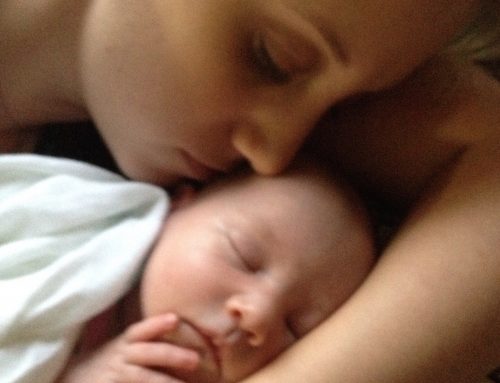Gems from ILCA 2015 (No.1)
As it is World Breastfeeding Week I think I should relate a gem from the International Lactation Consultants Association conference held last week in Washington DC.
- Kathy Dettwyler, Professor of Anthropology at the University of Delaware gave a great talk about the time of weaning (meaning ‘ceasing breastfeeding’ not adding solids).
Unencumbered by culture, societal and peer pressure, how long does biology tell us to breastfeed our young?
It seems reasonable to compare the timing of weaning in non-human primates, but as they have different lifespans, growth rates and times to mature we need to look at this using standards that allow us to compare species.
Dr Dettwyler has done extensive studies on this looking at:
- Time of gestation (how long is the fetus in the womb)
- Time to primary teeth
- Time to secondary teeth
- Time to sexual maturity
- Time to triple or quadruple birth weight.
And what does she find?
In comparison to Gorillas and chimps and other apes the minimum time would be predicted to be 2.5 years and for several predictors it’s 5, 6 or 7 years!
Moreover, looking at average weaning time in 64 ‘traditional’ human cultures and taking the average of those averages, weaning time is about 2.5 years too.
What changed the Western human and when?
In the West breastfeeding routinely continued for 3 to 5 years or longer…..until the invention of formula. Then habits and attitudes changed.
Remember that expert committees such as the American Academy of Pediatrics recommend a MINIMUM of 1 year and the World Health Organisation a MINIMUM of 2 years (not 1 or 2 years).
So, take home sentence, breastfeed for as long as you both like.









Hi Dr Chilton,
Great post and while I agree with your sentiment (breastfeed as long as you both want to), I am confused by your last paragraph where you state the WHO recommends a minimum of 2 years.
From the WHO website:
“Exclusive breastfeeding is recommended up to 6 months of age, with continued breastfeeding along with appropriate complementary foods up to two years of age or beyond.”
“up to” and “minimum” are not the same, in fact “up to” is closer to “maximum” than “minimum” though the words “or beyond” suggest a period over 2 years if desired.
Can you provide a link that suggests 2 years at a minimum?
Many thanks, Dani
No, I was quoting Prof Dettwyler. But “continued breastfeeding… up to 2 years or beyond” is saying the same, is it not?
Thank you for your reply. I don’t believe it is the same – as an example, “speed limit up to 60kmh”, “exam will take up to 2 hrs” does not mean a minimum of 60km or 2hrs, rather the opposite. The “or beyond” is exactly that – OR rather than AND.
It’s semantics but I believe semantics are important here.
I think saying that the WHO recommend a minimum of 2 years is misleading. I am all for promoting extended breastfeeding but I don’t think using the WHO recommendation in this way (as it appears Prof Dettlinger may have done here) helps the situation.
Thank you again for your reply and for continuing to promote breastfeeding and gentle parenting practices.
*Prof Dettlinger should be Prof Dettwyler
Hi Dr Chilton,
Actually I have been thinking about this and I can see how it could be taken as “minimum” – in this case “up to” is the same as “until”.
It’s the WHO wording itself that is rather unclear!
My understanding of the WHO recommendation of 2 years vs 1 year for AAP is around contraception and water/food safety and availability in the developing world rather than just infant health. Do you know more about this?
Thanks again, Dani
I have tried so many things post 5 month completion of baby ,but nothing was working out….
As I hail from India , here one cartoon character “Chhota Bheem” & another one which is famous across the world “wheels on the bus” is extremely famous & kids can easily develop connect with this….while watching this cartoon my baby take the feed very easily & comfortably & 🙂 really he dont take a single pie if I pause this cartoon on youtube.
My husband made a Youtube video of baby’s feeding during watching it & posted there (he was considering this trick as a help for feeding) , kindly spare time & have a look on this this as this has become an oncession for my baby
https://www.youtube.com/watch?v=RlW6h3TpUHI
My question is , how can I develop the habbit of taking feed regularly while he not watching the cartoon ?
I have already visited many doctors but baby is not keen to take the feed.
Kindly help & pls suggest what to do………..
Please suggest
I looked at your video. Remember that many babies at 5 months don’t want to take spoon foods at all. I wonder if you are still breastfeeding? If so and the weight is continuing to increase you might consider stopping the solids until he is keen on taking them in a few weeks without distraction methods. If you are not and remain concerned then I cannot see any great harm in continuing what you are doing – at least for the time being – as he is likely to change in the next weeks or months anyway. The main issue is your anxiety about how much he is eating. Babies tend not to starve themselves when there is food about. As long as the doctors you have seen have found him to be healthy and his weight is okay then you should relax and allow him to decide how much to eat without forcing methods of any kind.
I’m currently breastfeeding my 23 month old. (She’s high needs and isn’t ready to ween yet but has started dropping feeds)
Hardest thing I’ve found is the cultural pressure from others to ween including health professionals.
Reasons from ‘But she has teeth, shes too big and not a baby anymore, she’s too attached to you, if you weened then she wouldn’t be’… To ‘that’s disgusting, it’s not about her it’s about you now.’
Or from my GP that she a big girl (98th for height and 85th for weight) and a good eater so doesn’t need it anymore, it’s easier on the baby to ween at a year than it is later.
I think there’s a cultural and economic issue (mums need to get
Back to work, it’s not accepted anymore) and a lack of GP training and understanding in breastfeeding.
Agree. Even GPs and doctors are part of the culture. Nothing to do with biology, true mothering or being human!
Hi
I have read both your books and absolutely love them! They’re my go to baby shower present!
Regarding breastfeeding and solids, my Pediatritian is telling me that I should start solids at 5 months to reduce the risk of allergies. Several mums from my mothers group have been told the same.
What are your thoughts on that? 4 or 6 months..? Allergies?
That is correct. Challenging the baby’s immune system with ‘allergic causing’ foods before 6 months reduces the incidence of the baby developing the allergies. Somewhere between 4 – 6 months depending on how keen and receptive the baby is to spoon foods.